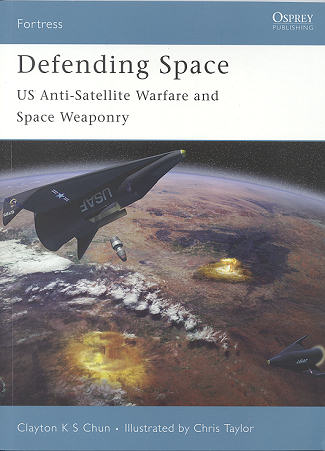 From
the beginning of the Cold War, the US had generally thought of itself as
superior in every respect to its nemesis, the Soviet Union. It came as quite a
shock when, in 1957, the Soviets launched the first satellite, Sputnik I. Now it
was known that the Russians had the ability to not only strike the US with
ballistic missiles, but also could start working on the capabilities to rain
nuclear weapons on the US with space-based satellite systems.
From
the beginning of the Cold War, the US had generally thought of itself as
superior in every respect to its nemesis, the Soviet Union. It came as quite a
shock when, in 1957, the Soviets launched the first satellite, Sputnik I. Now it
was known that the Russians had the ability to not only strike the US with
ballistic missiles, but also could start working on the capabilities to rain
nuclear weapons on the US with space-based satellite systems.
Or so it was thought.
The reality was that these sorts of capabilities were well
beyond the times, but still the possibility was there, so the US and USSR
developed agreements regarding the use of space.
While many today give little thought to how satellites impact
their lives, the truth is that most of us use space-based technology all the
time when we watch the weather on the news, or use our GPS systems to help find
a restaurant or even to make a cellular phone call. The military has been using
space for decades to keep track of our adversaries in the form of photo spy
satellites. In Desert Storm, much of the success of the coalition was due to the
ability to put weapons right on target thanks to the recently installed Global
Positioning Satellites (GPS). During the Iraq invasion, things had gotten to
where use of satellite based systems was taken for granted.
This book looks at the history of satellite based systems
from the early photo spy satellites to the use of anti-satellite systems, most
of them ground based, but with the emphasis now on developing systems that can
be orbited. Most of these involve the use of kinetic energy weapons as the use
of nukes in space to destroy an enemy satellite will also take out others in
near orbit.
Clayton Chun has done a remarkable job of explaining not only
what these systems are but how they operate. It is in such a way that one is not
lost in jargon, a problem with many books where a lot of technical information
is provided. The superb illustrations of Chris Taylor as shown on the cover help
us to visualize how this all works.
Not only are US systems covered, but the ones of other
countries, specifically China are covered. I found it to be a most intriguing
book and one that is a truly fascinating read. I'm sure you will as well and can
recommend it for your book shelves.
October 2006
For more on the complete line of Osprey books,
visit www.ospreypublishing.com. In the US, it is
Osprey Direct at 44-02 23rd St, Suite 219, Long Island City, NY 11101., where you can
get a catalogue of available books.
If you would like your product reviewed fairly and quickly by a
site that has nearly 325,000 visitors a month, please contact
me or see other details in the Note to
Contributors.
 From
the beginning of the Cold War, the US had generally thought of itself as
superior in every respect to its nemesis, the Soviet Union. It came as quite a
shock when, in 1957, the Soviets launched the first satellite, Sputnik I. Now it
was known that the Russians had the ability to not only strike the US with
ballistic missiles, but also could start working on the capabilities to rain
nuclear weapons on the US with space-based satellite systems.
From
the beginning of the Cold War, the US had generally thought of itself as
superior in every respect to its nemesis, the Soviet Union. It came as quite a
shock when, in 1957, the Soviets launched the first satellite, Sputnik I. Now it
was known that the Russians had the ability to not only strike the US with
ballistic missiles, but also could start working on the capabilities to rain
nuclear weapons on the US with space-based satellite systems.